The Superb List of Ideas for Patient Education Handouts
The best way to keep people in the know about your practice, their visits, and health is to send them patient education handouts. Let’s look at some creative ideas.

Educating your patients is the most important aspect of keeping them healthy outside of providing treatment to them.
Most of them don’t visit often and they need to take care of themselves at home to prevent any problems.
Unfortunately, people don’t always know the best way to do this. A lot of patients rely on the internet for health information, but this can be dangerous with circulating false information. They’ll also lookup reviews about your practice to get a feel for who you are. But no one or nothing introduces your company better than you can.
The best way to keep people educated about your practice, their visits, and health is to send them patient education handouts. You can send these by mail or email, or even hand them out at the end of their visits.
These pieces of paper help clients feel comfortable and prepared during their visit, and let them know how to best care for themselves while away from the doctor.
Let’s look at some ideas you can use for your patient education handouts.
Welcome Letters
One of the best ways to introduce your practice to new patients is by sending a warm welcome letter. On the surface, these might not seem educational, but these letters are great for informing your patients about your practice and who you are.
Introduce your staff so they know who they’ll see when they come in for their visit. Let them know of your credentials and anything that makes you stand out from other practices.
These talking points reassure the reader that they made the best decision in choosing your practice. You can also use these letters to give details about what to expect from during appointments.
After reading a welcoming educational handout, your new clients will feel more comfortable when they come in for their visit since they’ll know what’s going to happen.
Appointment Checklist
Another helpful patient education handout is an appointment checklist. People already get nervous about going to the doctor. So by giving a checklist, you’re helping ease their anxiety by giving them a step-by-step approach in preparation.
This list includes everything they’ll need to bring such as photo identification and an insurance card. Other tips to include are if they should eat breakfast because they’ll be getting a shot or having blood drawn.
There are some appointments that these are more important for, such as surgeries. But checklists are useful for even a basic doctor’s appointment to relieve tension and let the person know what to expect.
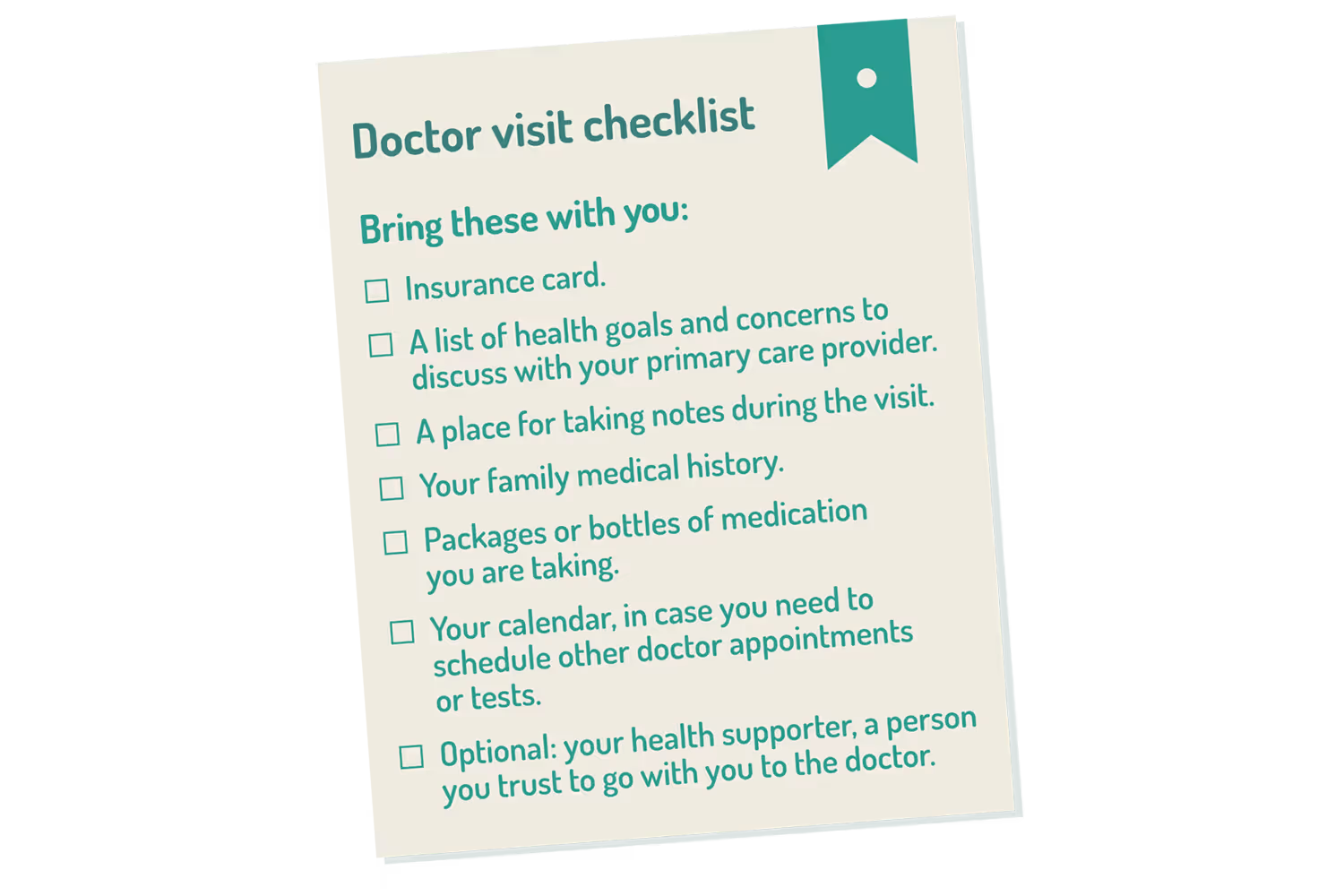
Giving a checklist to your patients before they come in for their appointment also helps you. When your clients come prepared it speeds up your waiting room, thus opening up more time slots for more volume.
Thank You Note
It might seem unnecessary to send a patient a thank you letter.
After all, you’re running a business and you were the one helping them. But you wouldn’t be where you are without your patients, so you need to show that you appreciate them. These small gestures make them more willing to return since they know you care about them visiting.

Aside from showing them the impact that they have on your practice, you can educate them with this type of handout. Depending on what you discussed in their visit, you can reiterate certain care tactics they need to focus on.
This might include a recap of their treatment plan, steps to improve their condition, or ways to continue a healthy lifestyle.
When presenting patients with too much information, they often forget a lot of it. One study found that patients forget 56% of instructions soon after they leave the doctor’s office.
But sending them a thank you note is a great way to remind them of instructions. This helps encourage them to adhere to their treatment plan.
Get Well Soon Card
We send our friends and family “get well soon” cards, so why not send one to your patient?
After all, they came to you when they were sick. You can use this educational handout similar to the thank you cards with treatment plan information.
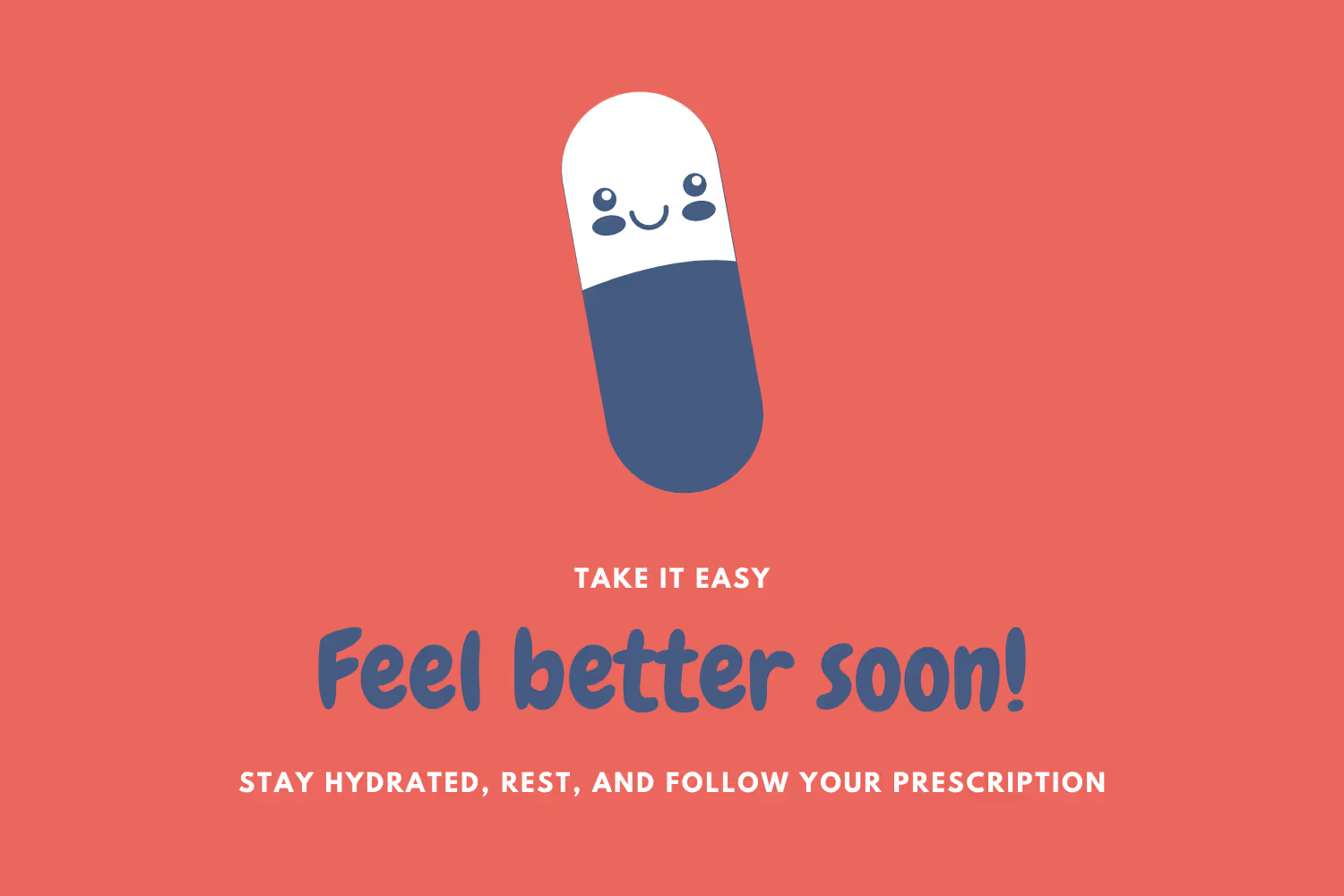
But this is an even better way to show you care that they heal. It’s a reminder that you’re there for them if they have any concerns and the best steps they can take to get better. This way, they’re more inclined to come back if they still aren’t feeling well.
Seasons Greetings
The holidays are a happy time for most people, but not everyone. While there are holidays throughout the entire year, the biggest holiday season is in late fall and early winter.
This also happens to be one of the most common times for people to get sick, and more people die during the winter.

Our immune systems aren’t as strong because we spend more time inside, are more inactive, and don’t see the sun as much. Because people are more likely to get sick at this time of the year, it can make for an unpleasant holiday season.
No one will enjoy themselves if they’re suffering from the flu or chronic conditions. It’s also hard for those who have lost a loved one around this time.
Sending a holiday card is a simple way to spread cheer in general, but especially during difficult times that any patient is experiencing. You can also include a handout about seasonal conditions such as the flu, seasonal affective disorder, or frostbite.

People use the holiday season as a time to visit their doctor since they have time off of work and school. If they receive a holiday card, it reminds them that they’re due for a visit
Or it could just encourage them to make an appointment if they are experiencing any health problems. If they see that you care enough to send a card, they’ll know you’ll want to help them heal.
Next Appointment Reminder
You don’t need to wait for the holidays to send a card that reminds patients they should make an appointment. Being more direct and sending an actual reminder is a simple way to let them know they need to schedule their next visit. Alternatively, it reminds them that their visit is approaching that they had already scheduled.
Not only do these reminders prompt people to schedule, but they even reduce no-shows. Once a patient sets up their visit, they can use these handouts to make note of the date and time.
Postcards are an easy option because postage is cheaper and patients can hang them on their fridge or bulletin board. Just make sure that the postcard doesn’t include any personal health information since it won’t be in an envelope.
Patient education materials have endless design possibilities endless design possibilities so that they’ll grab attention. The more visually appealing they are, the less likely they’ll get lost in a stack of mail. And the more likely patients will schedule their visit and keep the handout so they don’t forget to show up.
Seasonal Information
I already mentioned that for holiday cards you can include seasonal health information. But you can send these handouts at any time of the year. Every month is a different health awareness month. For example, September is World Alzheimer’s Month and October is Breast Cancer Awareness Month.
Your practice can send handouts for these to spread awareness on the conditions you specialize in. Or you can take a more general approach and provide information on health problems that are bigger concerns at certain times of the year.
For example, all patients should understand the impacts of sunburn during the summer. This kind of handout can teach them how to prevent skin damage from the sun so they don’t need to see a doctor for long-term problems.
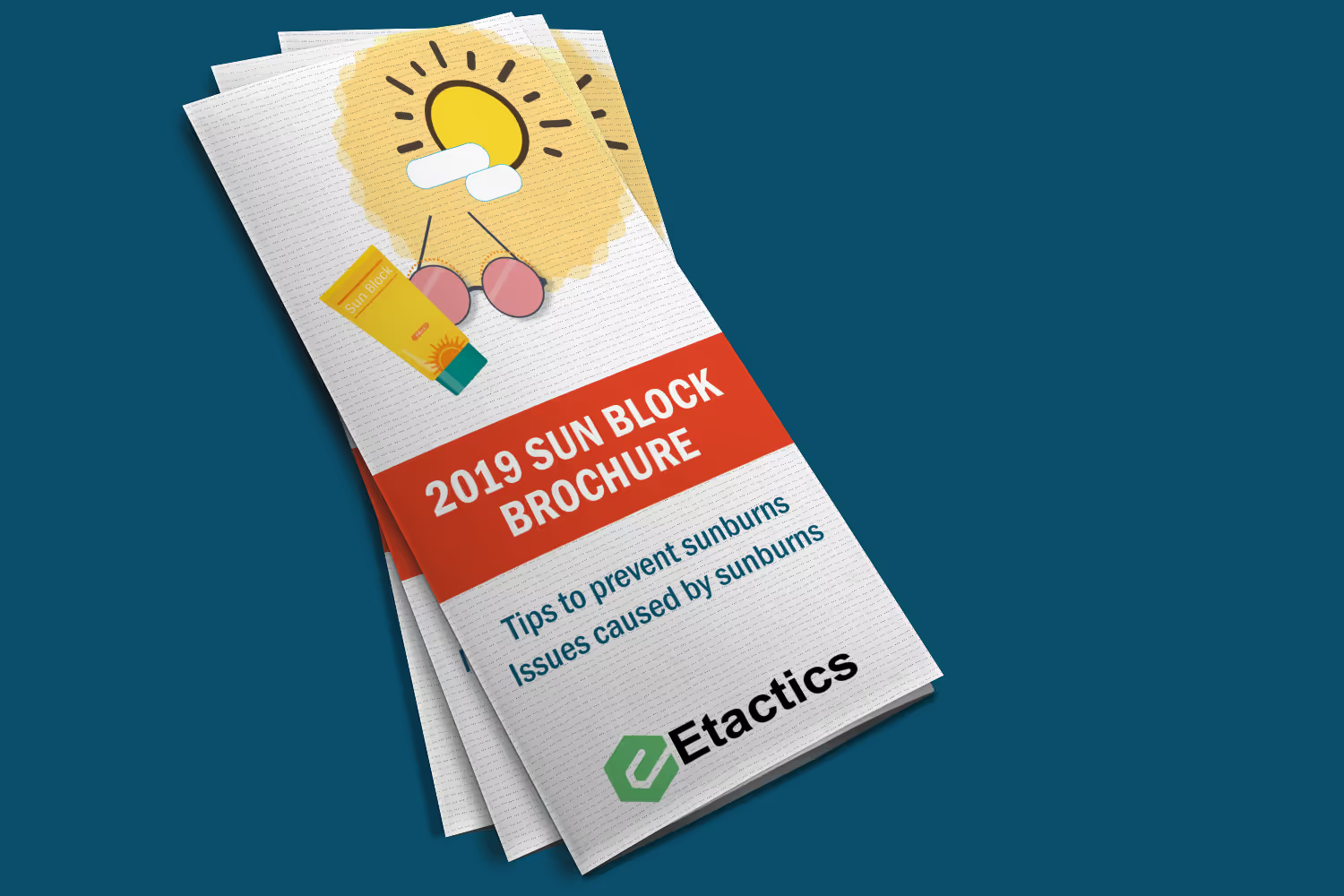
Other brochures even prompt them to come into your office. They can be a reminder about annual visits they need, such as for back-to-school physicals, vaccinations, or the flu shot once flu season begins. Not only will they be more likely to come into the office, but they’ll remember that they need to take more precautions to avoid getting sick.
Demographic Content
Depending on the content, patient education handouts aren’t appropriate for everyone. There’s health information that simply doesn’t apply to all of your patients. You wouldn’t send a letter about Alzheimer’s to one of your pediatric patients.
But there’s so much content that certain demographics should have. Here are some examples of different groups and the kind of health information you can share with them:
- Babies: formula use, water intake, diet, developmental milestones, vaccines, Sudden Infant Death Syndrome
- Children: vaccines, socializing, nutrition, brushing teeth, exercise, school physicals
- Adolescents: puberty, drug and alcohol use, sex, mental health
- Young adults: meningitis vaccination, drug and alcohol use, sex, mental health
- Adult women: pregnancy, mammograms, menopause
- Adults over 45: colonoscopy screening
- Retirement age: chronic conditions, staying active, injuries from falls, preventing memory loss
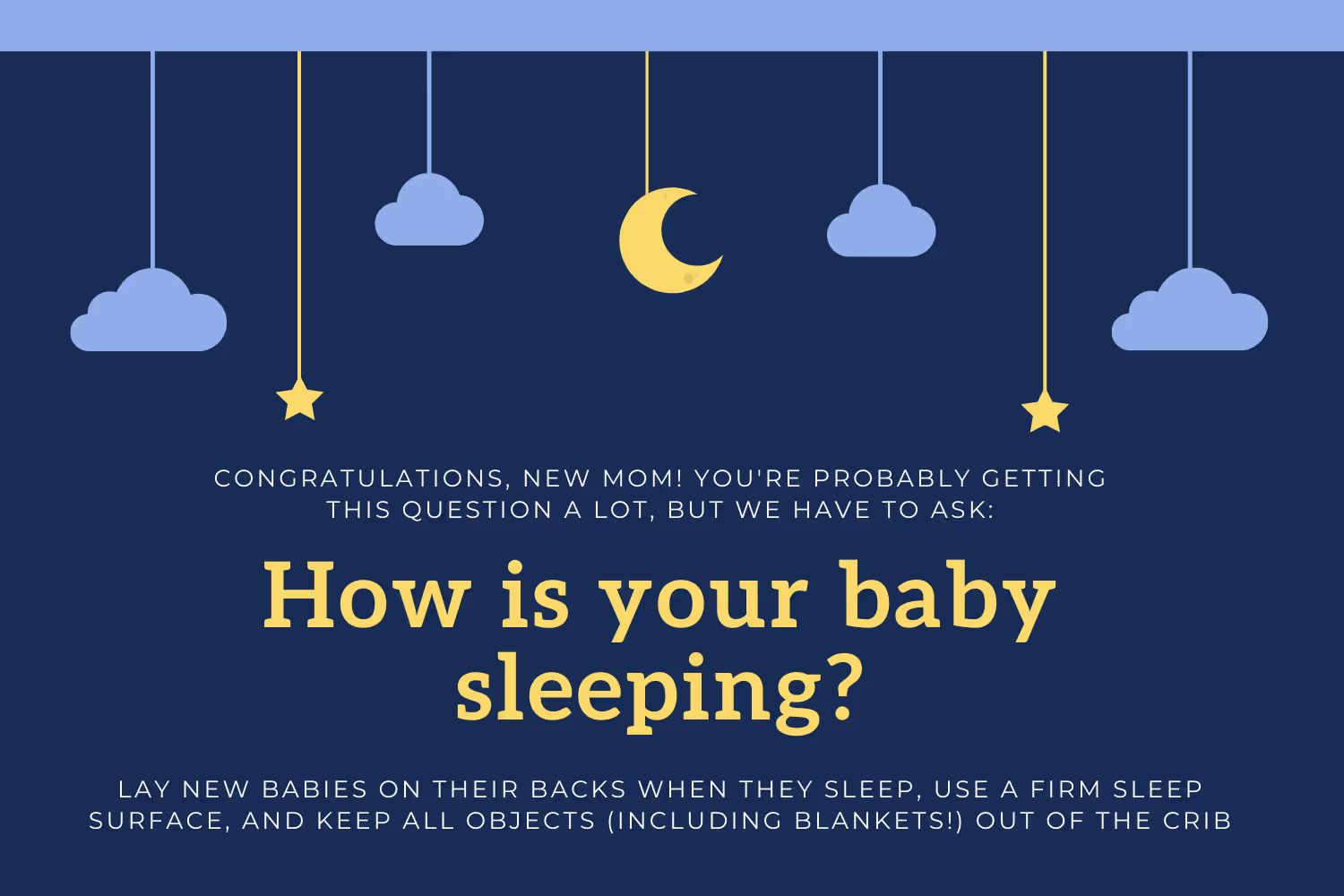
The list goes on. While I already said that not all handouts apply to everyone, in some cases it might still be helpful to send these to different demographics. Let me explain.
Sending educational materials to a child isn’t going to do much - some kids can’t even read.
There are better ways to communicate with pediatric patients. For example, you can send them a handout that they’ll resonate with such as a popular cartoon who’s eating their vegetables. But also send a factual brochure to the parents who will then encourage healthy habits.
You can do a similar approach for infants. While the baby might be your patient, it’s beneficial to send health information to the new mom. Even though she isn’t your patient, she’ll be more likely to continue using your practice if she knows you care about her whole family.
Prescription Directions
Medication noncompliance is a huge problem plaguing patients. Every so often, we might forget to take our medicine and it usually doesn’t affect us.
But some people don’t understand how to use their prescription or misunderstand the directions. Consistently misusing prescription drugs can lead to hospitalization or even death - up to 125,000 per year.
Patients might need reexplaining or simple clarification. After all, the multiple pages that the pharmacy gives us about our medicine can get confusing. We get overwhelmed reading all of the side effects, get lost in all of the terms, and might just give up.
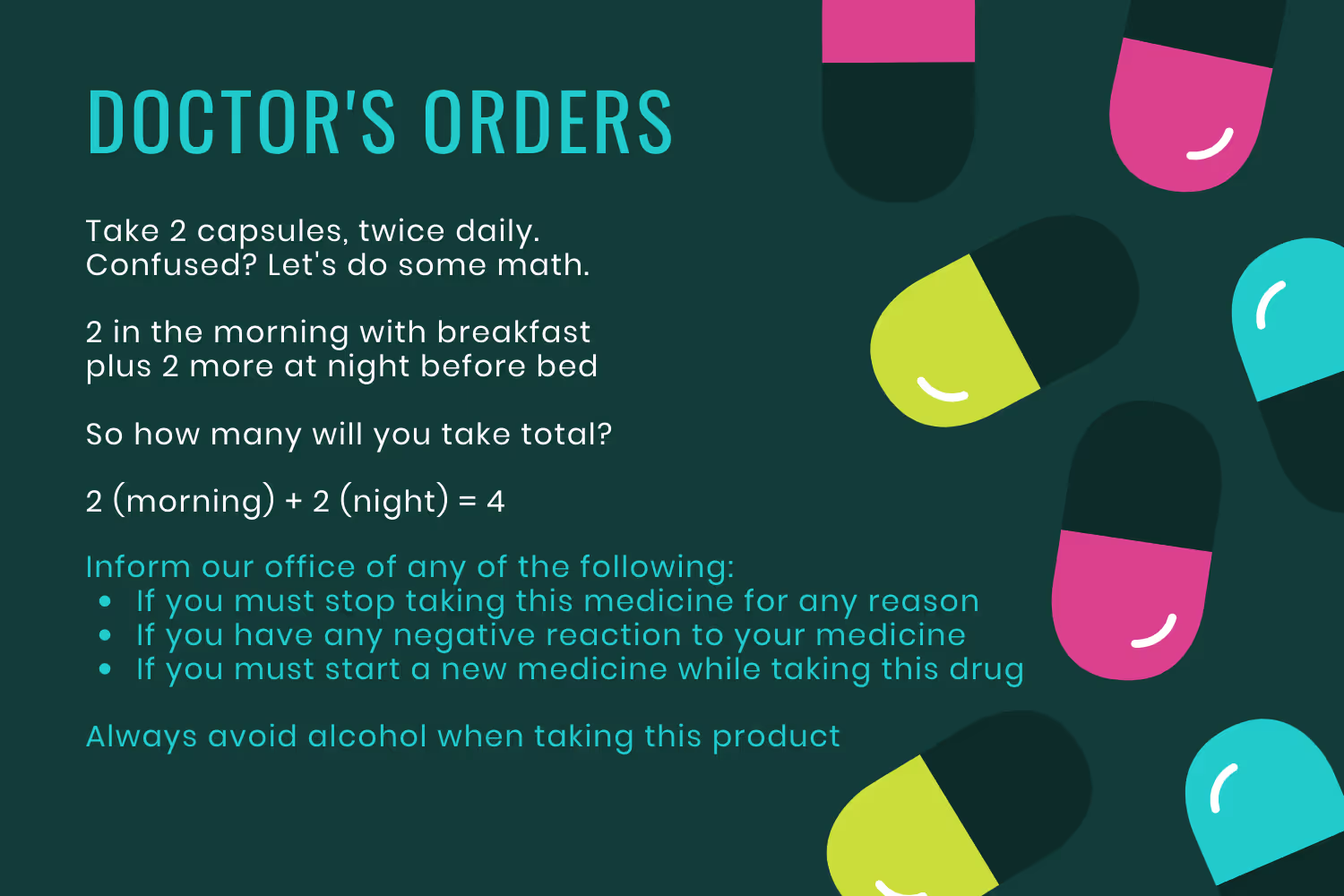
A simplified version from you as the doctor will help patients understand how to follow their directions. And they’ll be more likely to adhere since they know you personally. They’ll be more comfortable following a plan from someone they know instead of someone who just hands them their prescription.
Conclusion
You want your patients to have access to credible health information, that goes without saying.
You’re in your profession to help patients improve their health. The best way to ensure that people get this health knowledge is to give it to them yourself.
But it’s impossible to go over all of this with them in a short visit, and they’re likely going to forget it anyway. This is where patient education handouts come in. There are so many forms that you can send them to grab their attention.
Going out of your way to create and send these shows that you truly care about their health. It will make them more comfortable visiting your office and trusting your staff, and they’ll take better care of themselves at home.
Emphasize your product's unique features or benefits to differentiate it from competitors
In nec dictum adipiscing pharetra enim etiam scelerisque dolor purus ipsum egestas cursus vulputate arcu egestas ut eu sed mollis consectetur mattis pharetra curabitur et maecenas in mattis fames consectetur ipsum quis risus mauris aliquam ornare nisl purus at ipsum nulla accumsan consectetur vestibulum suspendisse aliquam condimentum scelerisque lacinia pellentesque vestibulum condimentum turpis ligula pharetra dictum sapien facilisis sapien at sagittis et cursus congue.
- Pharetra curabitur et maecenas in mattis fames consectetur ipsum quis risus.
- Justo urna nisi auctor consequat consectetur dolor lectus blandit.
- Eget egestas volutpat lacinia vestibulum vitae mattis hendrerit.
- Ornare elit odio tellus orci bibendum dictum id sem congue enim amet diam.
Incorporate statistics or specific numbers to highlight the effectiveness or popularity of your offering
Convallis pellentesque ullamcorper sapien sed tristique fermentum proin amet quam tincidunt feugiat vitae neque quisque odio ut pellentesque ac mauris eget lectus. Pretium arcu turpis lacus sapien sit at eu sapien duis magna nunc nibh nam non ut nibh ultrices ultrices elementum egestas enim nisl sed cursus pellentesque sit dignissim enim euismod sit et convallis sed pelis viverra quam at nisl sit pharetra enim nisl nec vestibulum posuere in volutpat sed blandit neque risus.

Use time-sensitive language to encourage immediate action, such as "Limited Time Offer
Feugiat vitae neque quisque odio ut pellentesque ac mauris eget lectus. Pretium arcu turpis lacus sapien sit at eu sapien duis magna nunc nibh nam non ut nibh ultrices ultrices elementum egestas enim nisl sed cursus pellentesque sit dignissim enim euismod sit et convallis sed pelis viverra quam at nisl sit pharetra enim nisl nec vestibulum posuere in volutpat sed blandit neque risus.
- Pharetra curabitur et maecenas in mattis fames consectetur ipsum quis risus.
- Justo urna nisi auctor consequat consectetur dolor lectus blandit.
- Eget egestas volutpat lacinia vestibulum vitae mattis hendrerit.
- Ornare elit odio tellus orci bibendum dictum id sem congue enim amet diam.
Address customer pain points directly by showing how your product solves their problems
Feugiat vitae neque quisque odio ut pellentesque ac mauris eget lectus. Pretium arcu turpis lacus sapien sit at eu sapien duis magna nunc nibh nam non ut nibh ultrices ultrices elementum egestas enim nisl sed cursus pellentesque sit dignissim enim euismod sit et convallis sed pelis viverra quam at nisl sit pharetra enim nisl nec vestibulum posuere in volutpat sed blandit neque risus.
Vel etiam vel amet aenean eget in habitasse nunc duis tellus sem turpis risus aliquam ac volutpat tellus eu faucibus ullamcorper.
Tailor titles to your ideal customer segment using phrases like "Designed for Busy Professionals
Sed pretium id nibh id sit felis vitae volutpat volutpat adipiscing at sodales neque lectus mi phasellus commodo at elit suspendisse ornare faucibus lectus purus viverra in nec aliquet commodo et sed sed nisi tempor mi pellentesque arcu viverra pretium duis enim vulputate dignissim etiam ultrices vitae neque urna proin nibh diam turpis augue lacus.


.avif)

